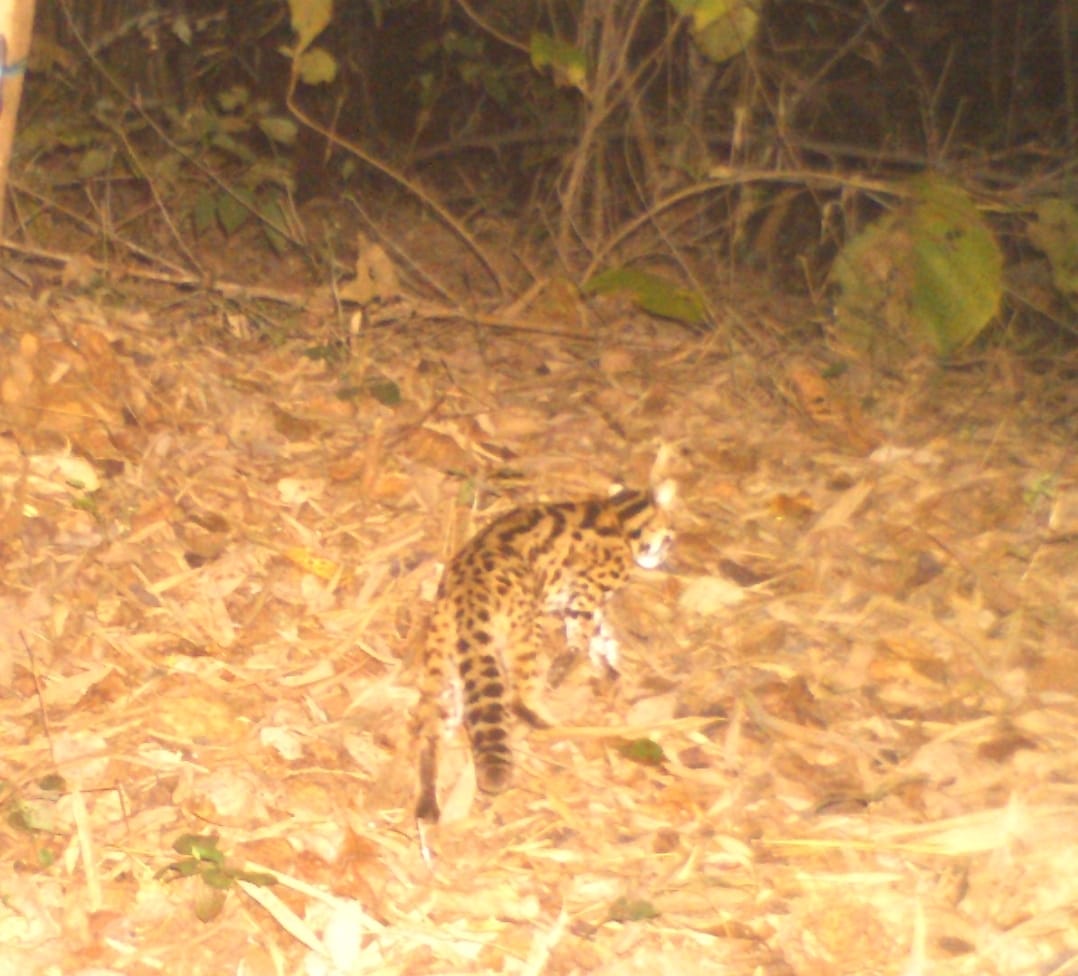Camera trapping in Pench Tiger reserve, Maharashtra revealed presence of leopard cat. The spotting was near Narahar village. The site of image capture was inside a seasonal stream. This is the first record of the leopard cat from central India.
Total 15 species of felids are found in India, constituting more than 40% global felid diversity. Out of total felid species present in India, 10 are small felids, which is also the highest globally. Though small felids play important ecological and socio-economic roles due their predation mainly on rodents, the data of these felids is deficient.
Leopard cat (scientific name Prionailurus bengalensis) which is most common and widespread species after the jungle cat in India due to its adaptive flexibility, is restricted to North East India, northern Himalayan states, West Bengal, Orissa and pockets of Western Ghats and is absent in central India.
Area of the Pench Tiger Reserve, Maharashtra is over 740 sq km (257.26 km2 buffer and 483.96 km2 of core) comprising of 7 ranges of which 2 are buffer and 5 are core. The reserve gets its name from the Pench River which halves the Reserve in two parts east Pench and west Pench and flows 74 km through the forest.
The northern part of PTR has hilly terrain while the southern part has is relatively plain. Forest type is predominantly a Tropical Dry Deciduous and Semi-evergreen forest dominated by teak (scientific name Tectona grandis). Reserve shows corridor connectivity with the Melghat Tiger Reserve to the west, Navegaon-Nagzira Tiger Reserve to the southeast, Pench Tiger Reserve (MP) to the north, and Kanha Tiger Reserve (MP) to the northeast.
The grid bearing leopard cat belonged to Compartment number 663 belonging to Narhar beat of buffer range ‘Nagalwadi’ Range which is part of Mansingh Deo wildlife sanctuary. Adjoining forest of West Pench range was declared as National Park in 1975 and tiger reserve in 1999 and is one of the most pristinely preserved area in Central Indian landscape.
The area is just 2km away from the ‘Narhar’village.
Studying distribution of any animal is very vital to make any conservation efforts holistic.
Current finding will pay the way for the more works in the distribution of the hitherto relatively under-studied felid and will provide a better opportunity to hypothesize the theories of its distribution in India.
👉 Click here to read the latest Gujarat news on TheLiveAhmedabad.com





